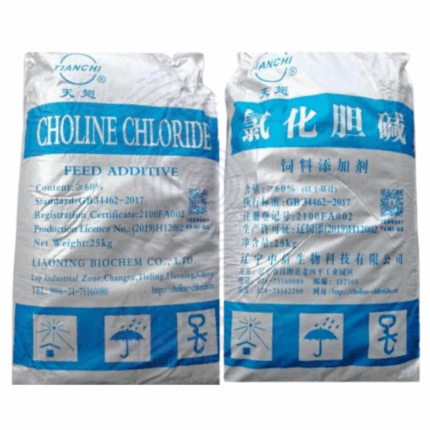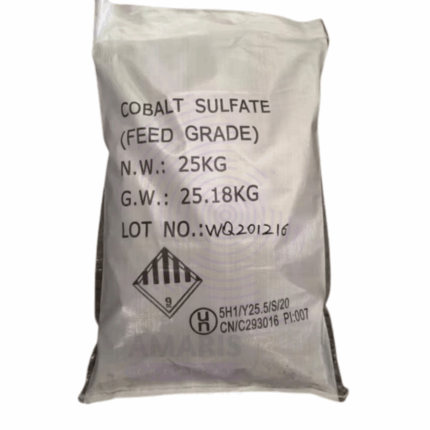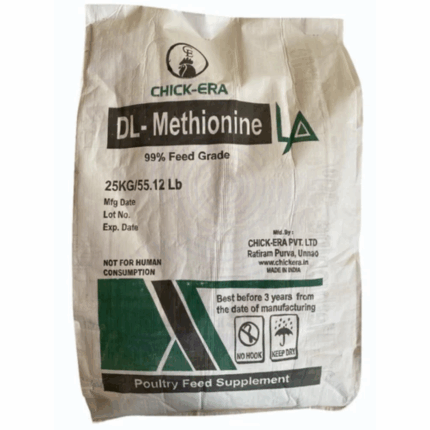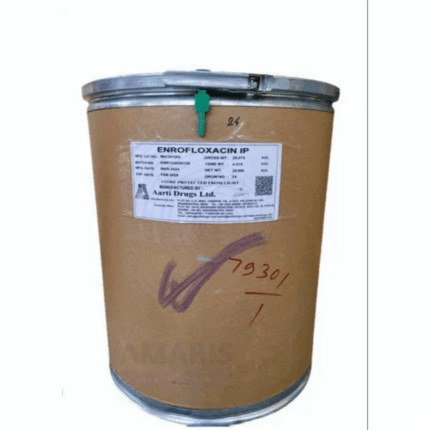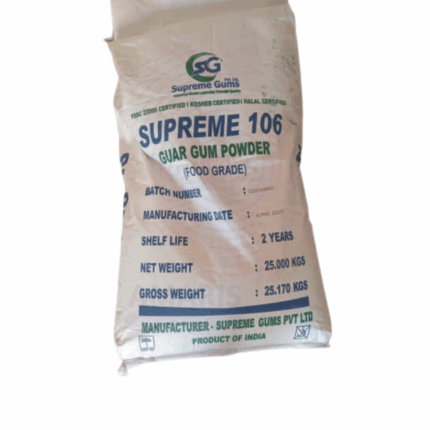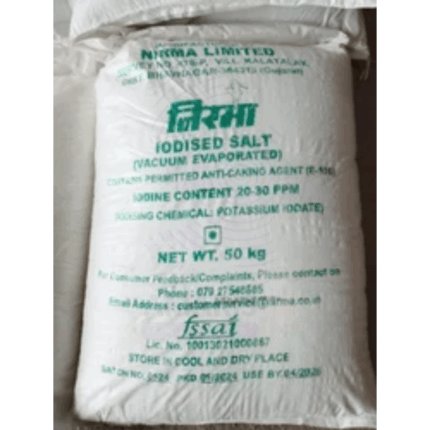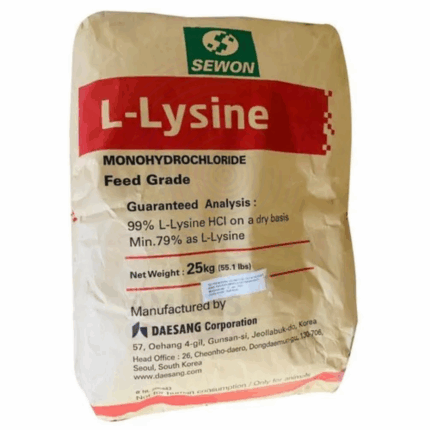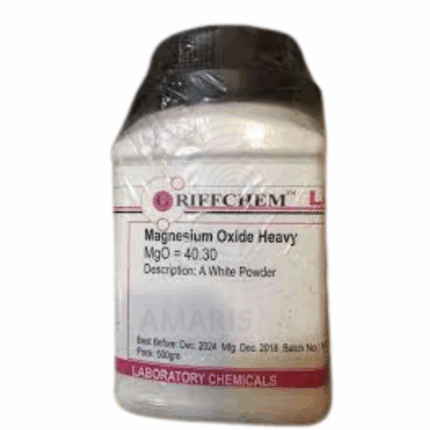
Dicalcium Phosphate Dihydrate (DCP Dihydrate)
Dicalcium Phosphate Dihydrate (DCP Dihydrate) is an odorless, white crystalline powder or granule composed of calcium and phosphate in a hydrated form. It is widely used in the pharmaceutical, food, animal feed, and industrial sectors. It serves as a calcium and phosphorus supplement, excipient, and abrasive agent, valued for its stability, bioavailability, and neutral taste. DCP Dihydrate complies with various pharmacopeial standards (e.g., USP, BP, FCC) depending on the grade.
Dicalcium Phosphate Dihydrate (DCP Dihydrate) Uses
Primary Uses
Pharmaceuticals
- Used as an excipient in tablets and capsules as a diluent, binder, and buffering agent.
- Offers excellent compressibility and flowability in direct compression formulations.
- Used in toothpaste as a gentle abrasive and polishing agent.
Animal Feed & Veterinary
- Supplement in livestock and poultry feed as a bioavailable source of calcium and phosphorus, essential for bone and eggshell development.
- Used in pet supplements for nutritional fortification.
Food & Nutraceuticals
- Used in mineral supplements, tablets, and powders as a source of calcium and phosphorus.
- Added to flour, cereals, and dairy products as a nutrient fortifier.
- Acts as a leavening agent in baking powders when combined with sodium bicarbonate.
Secondary Uses
Dental Care Products
- Acts as a gentle abrasive and remineralization agent in oral care products like tooth powders and pastes.
Fertilizers
- Occasionally used in specialized formulations as a soil conditioner or slow-release phosphorus source.
Industrial Applications
- Used in ceramics and polishing compounds.
- Employed as a filler in non-toxic applications like plastics, paints, and sealants.
Laboratory & Research Use
Used as a reference compound or reagent in analytical chemistry and biology for phosphate and calcium studies.
1. Basic Identification Attributes
- Chemical Name (IUPAC): Calcium hydrogen phosphate dihydrate
- Common/Trade Name: Dicalcium Phosphate Dihydrate (DCP Dihydrate)
- CAS Number: 7789-77-7
- HS Code: 2835.25.00
- Molecular Formula: CaHPO₄·2H₂O
- Synonyms:
- Calcium phosphate dibasic dihydrate
- DCP Dihydrate
- Calcium monohydrogen phosphate dihydrate
2. Physical & Chemical Properties
- Physical State: Crystalline powder or granules
- Color & Odor: White; odorless and tasteless
- Melting Point: Decomposes before melting
- Boiling Point: Not applicable
- Density: ~2.31 g/cm³
- Solubility:
- Slightly soluble in water (~0.02 g/100 mL at 25°C)
- Insoluble in alcohol
- pH (suspension): 6.5–8.0
- Stability: Stable under normal conditions; loses water when heated
3. Safety & Hazard Attributes
- Hazard Class (GHS): Not classified as hazardous
- NFPA Ratings:
- Health: 0
- Flammability: 0
- Reactivity: 0
- Exposure Limits: None established; considered safe under normal use
- Toxicity: Non-toxic; high doses may cause constipation or hypercalcemia if consumed excessively
- Reactivity: Stable and non-reactive under normal handling
4. Storage & Handling Attributes
- Storage Conditions: Store in a cool, dry place away from moisture and strong acids
- Container Type: Fiber drums, HDPE bags, or food/pharma-grade containers
- Shelf Life: Up to 3 years if stored properly
- Special Handling: Use dry, clean scoops; avoid contamination and moisture exposure
5. Regulatory & Compliance Attributes
- FDA Status: GRAS (Generally Recognized as Safe) for food use
- USP/NF Status: Complies with United States Pharmacopeia (USP) and BP standards for pharmaceutical grade
- Food Additive Code (EU): E341(ii)
- REACH Status: Registered and compliant
- Transportation: Not regulated as hazardous material
- Waste Disposal: Dispose according to local, state, and national regulations
6. Environmental & Health Impact
- Ecotoxicity: Not harmful to aquatic or terrestrial environments
- Persistence: Non-persistent; breaks down naturally
- Bioaccumulation: Not expected to bioaccumulate
- Carcinogenicity/Mutagenicity: Not classified as carcinogenic or mutagenic
- Biodegradability: Environmentally benign and safe
-
Safety Handling Precautions
Personal Protective Equipment (PPE):
- Gloves
- Dust mask or respirator (in dusty environments)
- Safety goggles
- Lab coat or apron
Handling Measures:
- Avoid creating or inhaling dust
- Use local exhaust ventilation when handling bulk material
- Wash hands after handling
Storage Measures:
- Keep containers tightly closed and in a dry area
- Avoid moisture to prevent caking or degradation
Hygiene Practices:
- Maintain general industrial hygiene
- Avoid food contact if using technical or feed-grade material
First Aid Measures
- Inhalation: Move to fresh air; rinse throat with water if irritation occurs
- Skin Contact: Wash with soap and water; no special treatment usually needed
- Eye Contact: Rinse thoroughly with water for several minutes; seek attention if irritation persists
- Ingestion: Non-toxic; rinse mouth with water; seek advice if large amounts are ingested
Firefighting Measures
- Fire Hazards: Non-flammable and non-combustible
- Extinguishing Media: Use media suitable for surrounding fire
- Special Precautions: No specific risks; wear standard protective gear
Decomposition Products: None known under normal conditions


 Preservatives(food)
Preservatives(food) Flavor Enhancers
Flavor Enhancers Acidulants
Acidulants Sweeteners
Sweeteners Antioxidants
Antioxidants Colorants(food)
Colorants(food) Nutraceutical Ingredients (food)
Nutraceutical Ingredients (food) Nutrient Supplements
Nutrient Supplements Emulsifiers
Emulsifiers
 Collectors
Collectors Dust Suppressants
Dust Suppressants Explosives and Blasting Agents
Explosives and Blasting Agents Flocculants and Coagulants
Flocculants and Coagulants Frothers
Frothers Leaching Agents
Leaching Agents pH Modifiers
pH Modifiers Precious Metal Extraction Agents
Precious Metal Extraction Agents
 Antioxidants(plastic)
Antioxidants(plastic) Colorants (Pigments, Dyes)
Colorants (Pigments, Dyes) Fillers and Reinforcements
Fillers and Reinforcements Flame Retardants
Flame Retardants Monomers
Monomers Plasticizers
Plasticizers Polymerization Initiators
Polymerization Initiators Stabilizers (UV, Heat)
Stabilizers (UV, Heat)
 Antifoaming Agents
Antifoaming Agents Chelating Agents
Chelating Agents Coagulants and Flocculants
Coagulants and Flocculants Corrosion Inhibitors
Corrosion Inhibitors Disinfectants and Biocides
Disinfectants and Biocides Oxidizing Agents
Oxidizing Agents pH Adjusters
pH Adjusters Scale Inhibitors( water)
Scale Inhibitors( water)
 Antioxidants(cosmetic)
Antioxidants(cosmetic) Emollients
Emollients Fragrances and Essential Oils
Fragrances and Essential Oils Humectants
Humectants Preservatives
Preservatives Surfactants(cosmetic)
Surfactants(cosmetic) Thickeners
Thickeners UV Filters
UV Filters
 Fertilizers
Fertilizers Soil Conditioners
Soil Conditioners Plant Growth Regulators
Plant Growth Regulators Animal Feed Additives
Animal Feed Additives Biostimulants
Biostimulants Pesticides (Herbicides, Insecticides, Fungicides)
Pesticides (Herbicides, Insecticides, Fungicides)
 Active Pharmaceutical Ingredients (APIs)
Active Pharmaceutical Ingredients (APIs) Excipients
Excipients Solvents(pharmaceutical)
Solvents(pharmaceutical) Antibiotics
Antibiotics Antiseptics and Disinfectants
Antiseptics and Disinfectants Vaccine Adjuvants
Vaccine Adjuvants Nutraceutical Ingredients (pharmaceutical)
Nutraceutical Ingredients (pharmaceutical) Analgesics & Antipyretics
Analgesics & Antipyretics
 Analytical Reagents
Analytical Reagents Solvents(lab)
Solvents(lab) Chromatography Chemicals
Chromatography Chemicals Spectroscopy Reagents
Spectroscopy Reagents microbiology-and-cell-culture-reagents
microbiology-and-cell-culture-reagents Molecular Biology Reagents
Molecular Biology Reagents Biochemical Reagents
Biochemical Reagents Inorganic and Organic Standards
Inorganic and Organic Standards Laboratory Safety Chemicals
Laboratory Safety Chemicals Specialty Laboratory Chemicals(Special Laboratory Equipment)
Specialty Laboratory Chemicals(Special Laboratory Equipment)
 Demulsifiers
Demulsifiers Hydraulic Fracturing Fluids
Hydraulic Fracturing Fluids Scale Inhibitors(oil)
Scale Inhibitors(oil) Surfactants(oil)
Surfactants(oil) Drilling Fluids
Drilling Fluids
 Dyes and Pigments
Dyes and Pigments Bleaching Agents
Bleaching Agents Softening Agents
Softening Agents Finishing Agents
Finishing Agents Antistatic Agents
Antistatic Agents
 Admixtures
Admixtures Waterproofing Agents
Waterproofing Agents Sealants and Adhesives
Sealants and Adhesives Curing Compounds
Curing Compounds Concrete Repair Chemicals
Concrete Repair Chemicals Anti-Corrosion Coatings
Anti-Corrosion Coatings
 Surfactants(cleaning)
Surfactants(cleaning) Builders
Builders Enzymes
Enzymes Solvents (Cleaning)
Solvents (Cleaning) Fragrances
Fragrances
 Electronic Chemicals
Electronic Chemicals Catalysts
Catalysts Lubricants
Lubricants Photographic Chemicals
Photographic Chemicals Refrigerants
Refrigerants Automotive chemicals
Automotive chemicals Pyrotechnic Chemicals
Pyrotechnic Chemicals
 Biodegradable Surfactants
Biodegradable Surfactants Bio-based Solvents
Bio-based Solvents Renewable Polymers
Renewable Polymers Carbon Capture Chemicals
Carbon Capture Chemicals Wastewater Treatment Chemicals
Wastewater Treatment Chemicals
 Pigments
Pigments Solvents(paint)
Solvents(paint) Specialty Coatings
Specialty Coatings Binders/Resins
Binders/Resins Additives
Additives Driers
Driers Anti-Corrosion Agents
Anti-Corrosion Agents Functional Coatings
Functional Coatings Application-Specific Coatings
Application-Specific Coatings
 Fresh Herbs
Fresh Herbs Ground Spices
Ground Spices Whole Spices
Whole Spices Spice Blends
Spice Blends Dried Herbs
Dried Herbs
 Leavening Agents
Leavening Agents Dough Conditioners
Dough Conditioners Flour Treatments
Flour Treatments Fat Replacers
Fat Replacers Decoratives
Decoratives Preservatives(baking)
Preservatives(baking)
 Plasticizers & Softeners
Plasticizers & Softeners Reinforcing Agents
Reinforcing Agents Adhesion Promoters
Adhesion Promoters Vulcanizing Agents
Vulcanizing Agents Antidegradants
Antidegradants Blowing Agents
Blowing Agents Fillers & Extenders
Fillers & Extenders Accelerators & Retarders
Accelerators & Retarders






